Firm Dynamics and Employment Outcomes
In a market economy, firm foundations and closures are important drivers of resource (re)allocation, structural change, and economic development which is particularly important with respect to the economic transformation of East Germany from a state-directed to a market economy. At the same time, job displacement coming along with structural change may have serious consequences for affected employees, such as unemployment, earnings losses, or lower job quality in a new job. This research group uses microeconometric methods to analyze foundation, evolution, and failure of firms, the amount and quality of jobs created by new firms and the consequences of firm closures for employees, in particular in terms of labor market outcomes such as employment and wages.
Research Cluster
Productivity and InstitutionsYour contact

Mitglied - Department Structural Change and Productivity
EXTERNAL FUNDING
01.2020 ‐ 06.2024
The Rise of Populist Parties in Europe: The Dark Side of Globalization and Technological Change?
VolkswagenStiftung
Globalisation may have increased prosperity in general, but has also led to unemployment, wage inequality, outward migration and, thus, ageing populations in many European regions. This project examines whether these economic burdens lead to votes for populist parties.
01.2019 ‐ 06.2022
MICROPROD („Raising EU Productivity: Lessons from Improved Micro Data“)
European Commission
The goal of MICROPROD is to contribute to a greater understanding of the challenges brought about in Europe by the fourth industrial revolution and the associated ‘productivity puzzle’ in a context of globalisation and digitisation, and to provide alternative policy options to better address these challenges.
This project has received funding from the European Union’s Horizon 2020 research and innovation programme under grant agreement No 764810.
07.2018 ‐ 12.2020
Firm Wage Differentials in Imperfect Labour Markets: The Role of Market Power and Industrial Relations in Rent Splitting between Workers and Firms
German Research Foundation (DFG)
The main purpose of this proposal is to grasp a firmer understanding of how employment rents are split between workers and employers in imperfect labour markets and how labour market institutions, such as unions and works councils, influence the distribution of rents. In that it not only promises new insights into the wage formation process and the likely consequences of important labour market trends like falling unionisation and worker codetermination, but also promises to inform important public policy debates, such as which rights should be granted to organised labour.
02.2019 ‐ 09.2019
Evaluation of the IAB Establishment Panel 2018 and Preparation of a Results Report for West and East Germany
Final report: Fehlende Fachkräfte in Deutschland – Unterschiede in den Betrieben und mögliche Erklärungsfaktoren: Ergebnisse aus dem IAB-Betriebspanel 2018. IAB-Forschungsbericht 10/2019. (in German, English abstract available)
04.2016 ‐ 03.2019
Wage and Employment Effects of Bankruptcies
German Research Foundation (DFG)
The project analyzes the process and the consequences of firm failure. For the first time, evidence on the consequences of small firms’ bankruptcy on employees’ earnings and wages is provided. The project e.g. shows that employees of small firms are more likely to see their employer failing but, at the same time, face smaller earnings and wage losses than employees displaced from larger firms. Check the below research articles for further insights.
01.2018 ‐ 12.2018
Evaluation of the IAB Establishment Panel 2017 and Preparation of a Results Report for West and East Germany
Final report: Lohnunterschiede zwischen Betrieben in Ost- und Westdeutschland: Ausmaß und mögliche Erklärungsfaktoren. Ergebnisse aus dem IAB-Betriebspanel 2017. IAB-Forschungsbericht 6/2018. (in German, English abstract available)
01.2017 ‐ 09.2017
Evaluation of the IAB Establishment Panel 2016 and Preparation of a Results Report for West and East Germany
Final report: Produktivitätsunterschiede zwischen West- und Ostdeutschland und mögliche Erklärungsfaktoren. Ergebnisse aus dem IAB-Betriebspanel 2016. IAB-Forschungsbericht 16/2017. (in German, English abstract available)
Refereed Publications
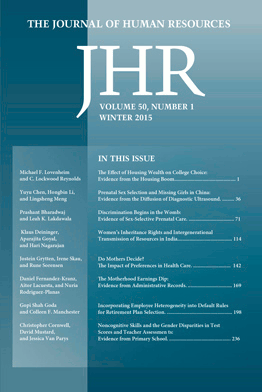
The Value of Smarter Teachers: International Evidence on Teacher Cognitive Skills and Student Performance
in: Journal of Human Resources, No. 4, 2019
Abstract
We construct country-level measures of teacher cognitive skills using unique assessment data for 31 countries. We find substantial differences in teacher cognitive skills across countries that are strongly related to student performance. Results are supported by fixed-effects estimation exploiting within-country between-subject variation in teacher skills. A series of robustness and placebo tests indicate a systematic influence of teacher skills as distinct from overall differences among countries in the level of cognitive skills. Moreover, observed country variations in teacher cognitive skills are significantly related to differences in women’s access to high-skill occupations outside teaching and to salary premiums for teachers.
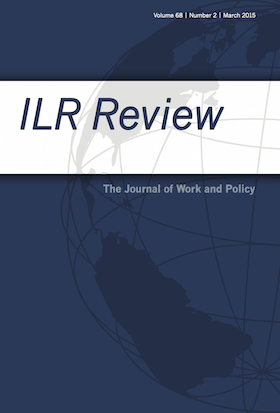
Do Start-ups Provide Employment Opportunities for Disadvantaged Workers?
in: ILR Review, No. 5, 2019
Abstract
This article compares the hiring patterns of start-ups and incumbent firms to analyze whether start-ups offer relatively more job opportunities to disadvantaged workers. Using administrative linked employer–employee data for Germany that provide the complete employment biographies of newly hired workers, the authors show that young firms are more likely than incumbents to hire applicants who are older, foreign, or unemployed, or who have unstable employment histories, arrive from outside the labor force, or were affected by a plant closure. Analysis of entry wages shows that penalties for these disadvantaged workers, however, are higher in start-ups than in incumbent firms. Therefore, even if start-ups provide employment opportunities for certain groups of disadvantaged workers, the quality of these jobs in terms of initial remuneration appears to be low.
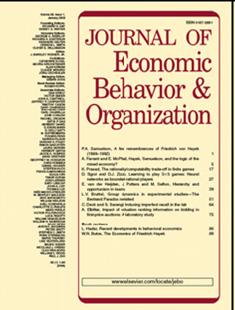
The Internet Effects on Sex Crime Offenses – Evidence from the Broadband Internet Expansion in Germany
in: Journal of Economic Behavior and Organization, September 2019
Abstract
This paper studies the effects of the introduction of a new mass medium on sex crime in Germany. I use unique data on criminal offenses and broadband internet measured at the municipal level to shed light on this issue. In order to address endogeneity in broadband internet availability, I exploit technical peculiarities at the regional level that determine the roll-out of high-speed internet. Results provide evidence of a substitution effect of internet exposure on sex crime. The substitution effect is neither driven by differences in reporting behavior, nor by matching processes at the victim and offender side. This suggests that the consumption of extreme media plays an important role in explaining the documented high-speed internet effect.
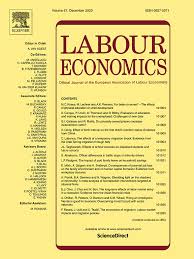
Does Extended Unemployment Benefit Duration Ameliorate the Negative Employment Effects of Job Loss?
in: Labour Economics, 2019
Abstract
We study the effect of job displacement due to bankruptcies on earnings and employment prospects of displaced workers and analyse whether extended potential unemployment benefit duration (PBD) ameliorates the negative consequences of job loss. Using German administrative linked employer-employee data, we find that job loss has long-lasting negative effects on earnings and employment. Displaced workers also more often end up in irregular employment relationships (part-time, marginal part-time employment, and temporary agency work) than their non-displaced counterparts. Applying a regression discontinuity approach that exploits a three months PBD extension at the age threshold of 50 we find hardly any effects of longer PBD on labour market outcomes of displaced workers.

HIP, RIP, and the Robustness of Empirical Earnings Processes
in: Quantitative Economics, No. 3, 2019
Abstract
The dispersion of individual returns to experience, often referred to as heterogeneity of income profiles (HIP), is a key parameter in empirical human capital models, in studies of life‐cycle income inequality, and in heterogeneous agent models of life‐cycle labor market dynamics. It is commonly estimated from age variation in the covariance structure of earnings. In this study, I show that this approach is invalid and tends to deliver estimates of HIP that are biased upward. The reason is that any age variation in covariance structures can be rationalized by age‐dependent heteroscedasticity in the distribution of earnings shocks. Once one models such age effects flexibly the remaining identifying variation for HIP is the shape of the tails of lag profiles. Credible estimation of HIP thus imposes strong demands on the data since one requires many earnings observations per individual and a low rate of sample attrition. To investigate empirically whether the bias in estimates of HIP from omitting age effects is quantitatively important, I thus rely on administrative data from Germany on quarterly earnings that follow workers from labor market entry until 27 years into their career. To strengthen external validity, I focus my analysis on an education group that displays a covariance structure with qualitatively similar properties like its North American counterpart. I find that a HIP model with age effects in transitory, persistent and permanent shocks fits the covariance structure almost perfectly and delivers small and insignificant estimates for the HIP component. In sharp contrast, once I estimate a standard HIP model without age‐effects the estimated slope heterogeneity increases by a factor of thirteen and becomes highly significant, with a dramatic deterioration of model fit. I reach the same conclusions from estimating the two models on a different covariance structure and from conducting a Monte Carlo analysis, suggesting that my quantitative results are not an artifact of one particular sample.
Working Papers
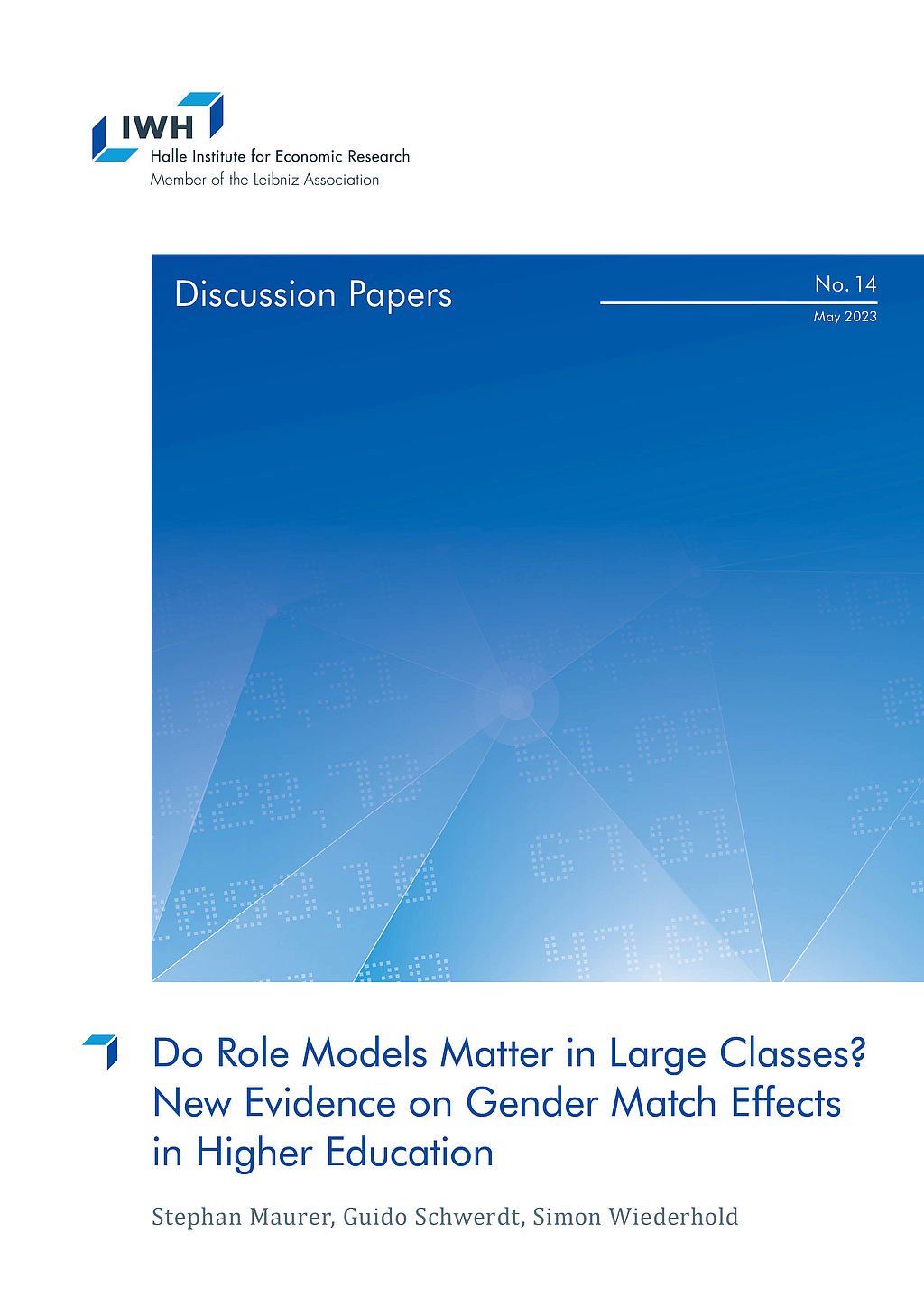
Do Role Models Matter in Large Classes? New Evidence on Gender Match Effects in Higher Education
in: IWH Discussion Papers, No. 14, 2023
Abstract
It is well established that female students perform better when taught by female professors. However, little is known about the mechanisms explaining these gender match effects. Using administrative records from a German public university, which cover all programs and courses between 2006 and 2018, we show that gender match effects are sizable in smaller classes, but are absent in larger classes. These results suggest that direct and frequent interactions between students and professors are crucial for gender match effects to emerge. In contrast, the mere fact that one’s professor is female is not sufficient to increase performance of female students.
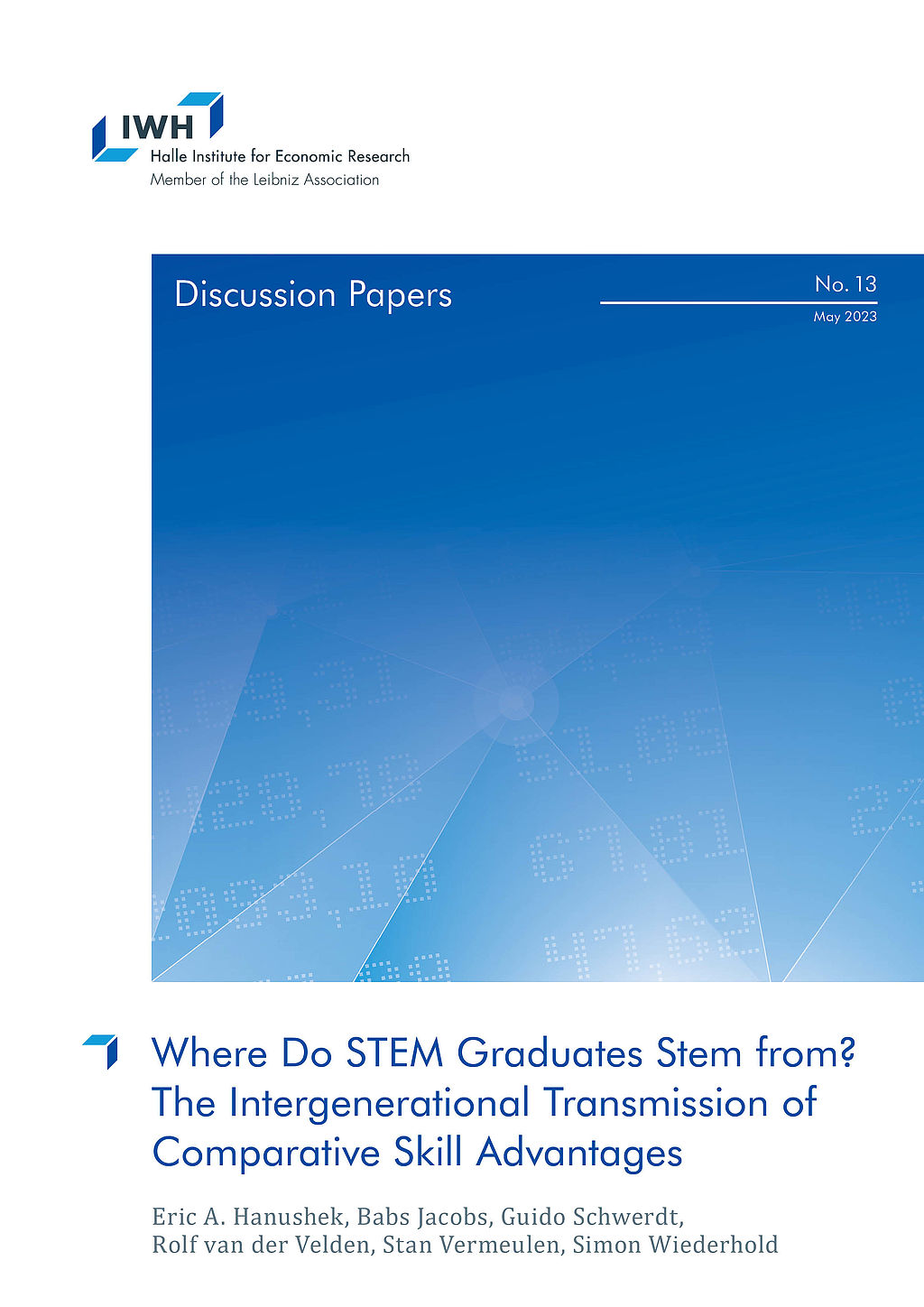
Where Do STEM Graduates Stem from? The Intergenerational Transmission of Comparative Skill Advantages
in: IWH Discussion Papers, No. 13, 2023
Abstract
The standard economic model of occupational choice following a basic Roy model emphasizes individual selection and comparative advantage, but the sources of comparative advantage are not well understood. We employ a unique combination of Dutch survey and registry data that links math and language skills across generations and permits analysis of the intergenerational transmission of comparative skill advantages. Exploiting within-family between-subject variation in skills, we show that comparative advantages in math of parents are significantly linked to those of their children. A causal interpretation follows from a novel IV estimation that isolates variation in parent skill advantages due to their teacher and classroom peer quality. Finally, we show the strong influence of family skill transmission on children’s choices of STEM fields.
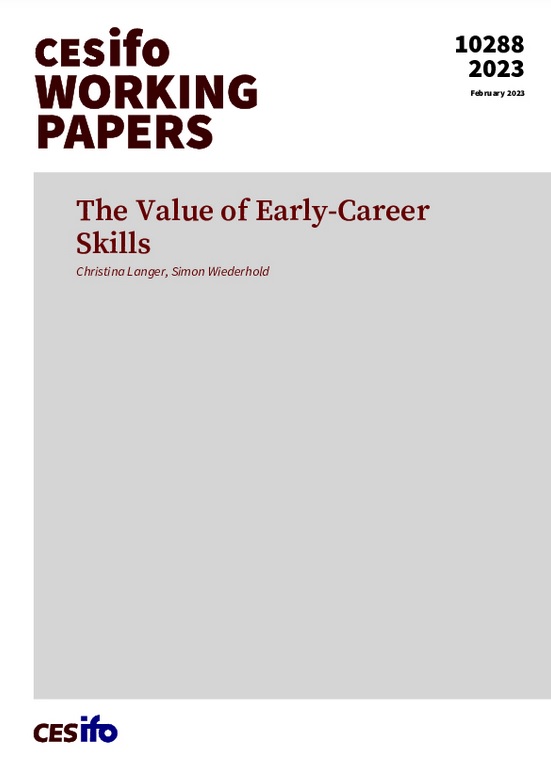
The Value of Early-Career Skills
in: CESifo Working Paper, No. 10288, 2023
Abstract
We develop novel measures of early-career skills that are more detailed, comprehensive, and labor-market-relevant than existing skill proxies. We exploit that skill requirements of apprenticeships in Germany are codified in state-approved, nationally standardized apprenticeship plans. These plans provide more than 13,000 different skills and the exact duration of learning each skill. Following workers over their careers in administrative data, we find that cognitive, social, and digital skills acquired during apprenticeship are highly – yet differently – rewarded. We also document rising returns to digital and social skills since the 1990s, with a more moderate increase in returns to cognitive skills.
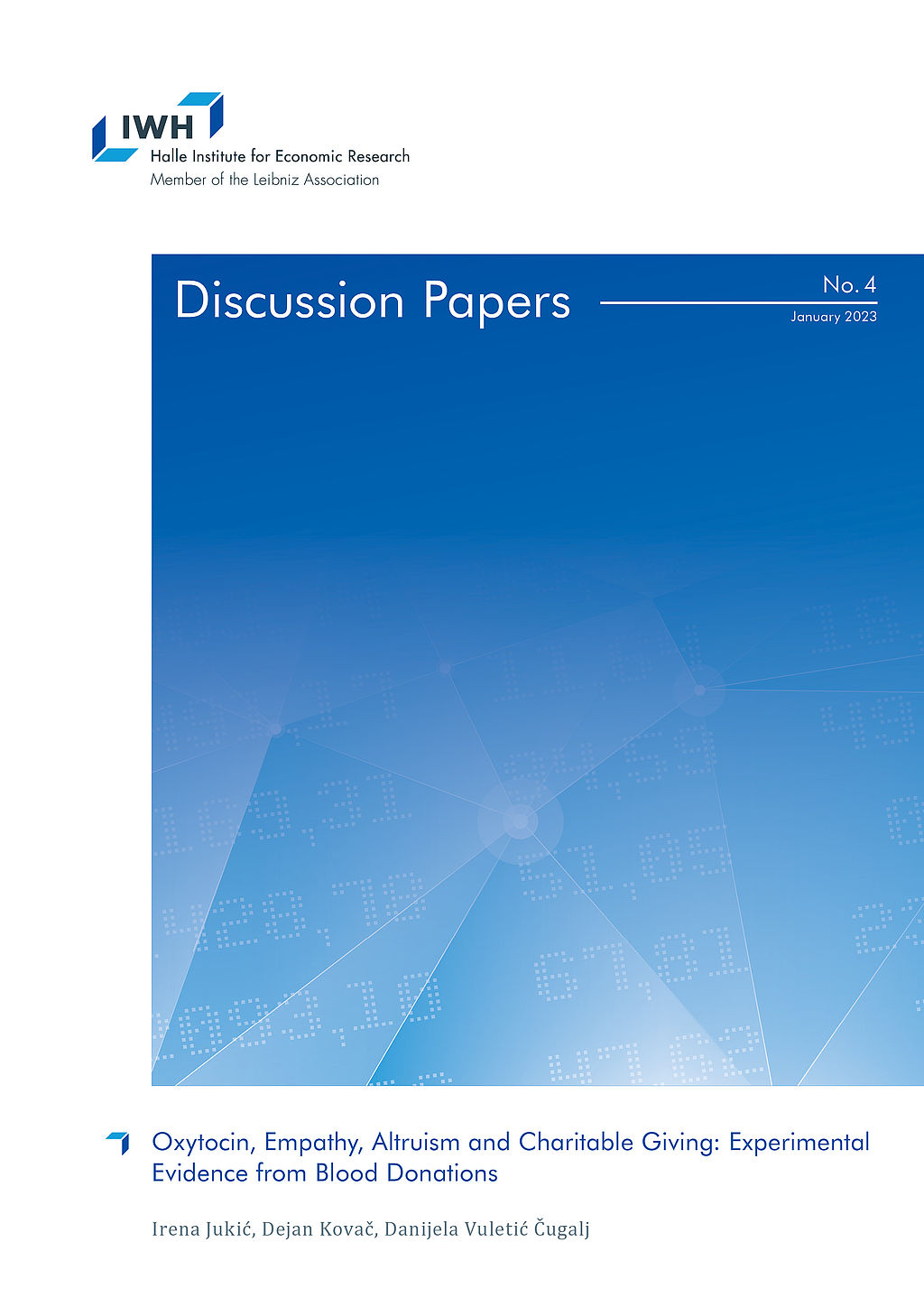
Oxytocin, Empathy, Altruism and Charitable Giving: Experimental Evidence from Blood Donations
in: IWH Discussion Papers, No. 4, 2023
Abstract
We conducted a field experiment in the natural setting of blood donations to test how oxytocin relates to empathy and altruism. We randomly assigned blood donors in the Croatian Institute for Transfusion Medicine to three groups with the aim to induce different levels of empathy by showing a neutral video to the donors from the control group and an emotional to the donors from the first and second treatment groups. In addition to watching the emotional video, donors from the second treatment group are given a gift which relates to the emotional story from the video. We find no effect of our treatment on induced levels of oxytocin. Null effects of our treatments could be explained by the above average baseline levels of oxytocin and inability of our treatments to provoke emotional stimuli in blood donors. Nonetheless, for our empathy measures we find the effect of gift exchange on empathic concerns, but not on perspective taking. After our experimental treatments, we followed the return of our blood donors for a whole year. We find that only variable which consistently predicts return for blood donation in stated period is the number of previous donations. From policy perspective it is an important finding. Especially for hospitals and other blood providers when faced with time and resource constraints.
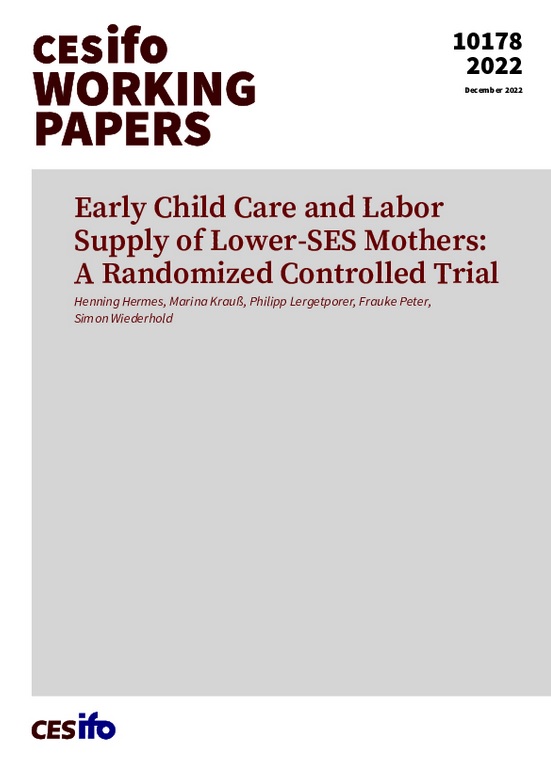
Early Child Care and Labor Supply of Lower-SES Mothers: A Randomized Controlled Trial
in: CESifo Working Paper, No. 10178, 2022
Abstract
We present experimental evidence that enabling access to universal early child care for families with lower socioeconomic status (SES) increases maternal labor supply. Our intervention provides families with customized help for child care applications, resulting in a large increase in enrollment among lower-SES families. The treatment increases lower-SES mothers' full-time employment rates by 9 percentage points (+160%), household income by 10%, and mothers' earnings by 22%. The effect on full-time employment is largely driven by increased care hours provided by child care centers and fathers. Overall, the treatment substantially improves intra-household gender equality in terms of child care duties and earnings.


















